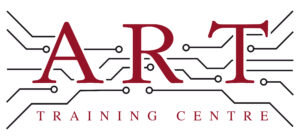Definition
IDC Connector is a type of electrical connector that allows for the connection of wires without the need for soldering. It consists of a plastic housing with metal contacts that pierce the insulation of the wire when pressed together, creating a secure electrical connection. IDC connectors are commonly used in electronics manufacturing and rework, making them a crucial component in various applications.
How It’s Used in the Industry
In electronics assembly, the IDC connector is typically used to connect wires to printed circuit boards (PCBs). The process begins with preparing the wires by stripping their insulation. Next, the wires are inserted into the IDC connector, which is then pressed down using a specialised tool. This action pierces the wire insulation and establishes a reliable connection without soldering. This method is particularly valuable for high-volume production as it speeds up assembly and reduces costs. For technicians in training and experienced professionals alike, understanding IDC connectors is essential for efficient assembly and troubleshooting in modern electronic devices.
History & Origins
The IDC connector became common in the 1980s as electronics manufacturing began to shift towards more automated processes. Early adoption was driven by the need for faster assembly methods and the development of standards, such as those set by IPC (Institute for Printed Circuits). As technology advanced, IDC connectors gained popularity due to their efficiency and reliability, becoming a staple in various electronic applications, including computer and telecommunications equipment.
Variations
There are several variations of IDC connectors, including ribbon cable connectors and multi-pin connectors. Ribbon cable connectors are designed for flat cables, allowing multiple connections in a compact form. In contrast, multi-pin IDC connectors can accommodate a larger number of wires in a single connector. These variations differ in application and design but share the same fundamental principle of making connections without soldering, offering flexibility and ease of use in electronics assembly.
Modern Applications
Today, IDC connectors are widely used in electronics production, especially in surface mount and through-hole assembly processes. They are essential for creating reliable connections in consumer electronics, automotive systems, and industrial equipment. Their importance lies in maintaining quality and reliability, as well as ensuring compliance with IPC standards. As technology evolves, IDC connectors continue to play a critical role in the efficient assembly and repair of electronic devices.
Practical Tips & Training
When working with IDC connectors, ensure that wires are properly stripped to avoid poor connections. Use appropriate tools for insertion to prevent damage to the connector or wires. Regular inspection of connections is crucial for maintaining quality and reliability. Structured training and certification in electronics are recommended to fully understand the nuances of using IDC connectors effectively, ensuring technicians are well-equipped for both assembly and troubleshooting tasks.


